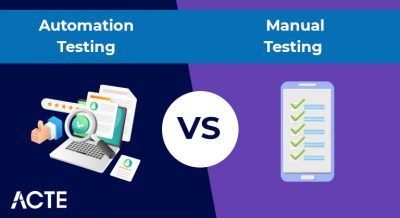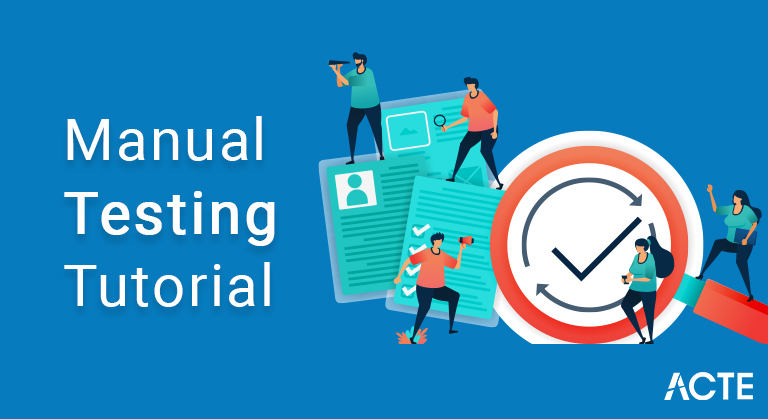
- What is Manual Testing?
- Why do we need manual testing?
- When to do manual testing?
- What are the various sorts of manual testing?
- How to perform manual testing?
- What are the advantages/disadvantages of manual testing?
- What is the difference between Manual and Automated testing?
- Important Manual Testing Techniques
- The Importance of Manual Testing
- Conclusion
- As the name proposes, Manual testing is the one where application testing happens physically. The experiments/situations are executed individually by Testers (proficient engaged with programming testing) physically without utilizing any readymade instruments, and afterward the outcomes are checked.
- So manual testing is an interaction where we look at the conduct of a piece of programming (it tends to be a part, module, include, and so forth) with the predefined, expected conduct which we set during the underlying periods of SDLC.
- Manual check is the most crude type of programming testing. A beginner can do it with next to no information on a specific device. Indeed, even an understudy, who has an essential comprehension of the application or testing of a framework, can perform manual check. Regardless, it is a fundamental Step in the product testing cycle. Any new framework or applications should be tried physically prior to computerizing the testing.
What is Manual Testing?
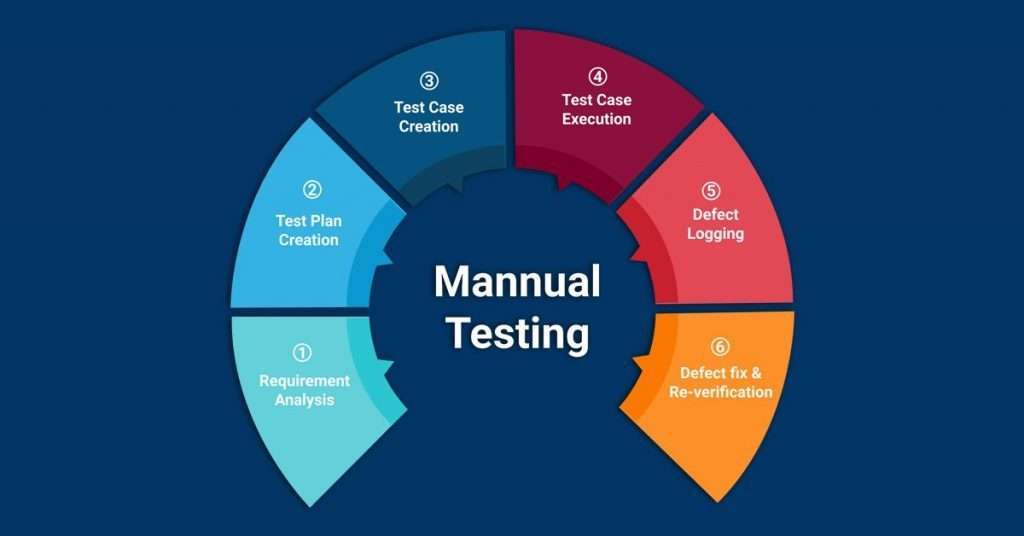
Why do we need manual testing?
With the changing patterns in the product business, increasingly more programming experts incline toward computerized testing, yet there are as yet various reasons which legitimize the requirement for manual testing. Not many of them are:
Human Perspective: The fundamental ease of use and look and feel of the application must be looked and assessed by Humans. As the product is created for people just, so they just can improve equity of approval from a client experience viewpoint.
A more extensive viewpoint and variety of the System work processes: Manual confirmation generally gives a more extensive point of view of the general application. As the human psyche will forever be in an exploratory structure, rather than a coding instrument that executes similar advances each time. Along these lines, it will give more far reaching inclusion to the framework approval.
Cost of mechanization: Sometimes, because of the courses of events or size of the venture, the lengthy endeavors for the computerization are not legitimate, and we generally incline toward a fast manual approval over the robotization testing.
Un-automatable situations: There can be numerous situations that are either not worth mechanizing and doesn’t give clear certainty of the client conduct when simply testing utilizing mechanization. For Example, there have been various situations on cell phones, which need client communications, for example, “Tap and Pay”, which now and again have various practices when mechanized utilizing devices and when an individual physically approved them.
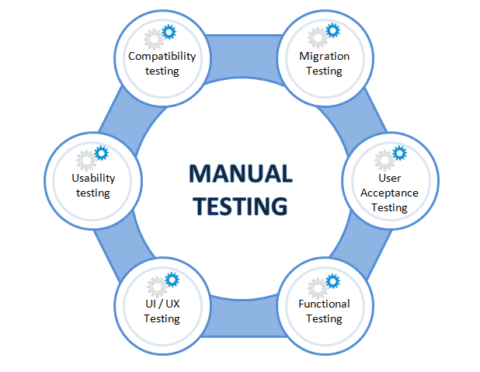
- Adhoc testing: Adhoc testing, as the name recommends, is spontaneous trying. It doesn’t have a particular methodology characterized neither one of the its has any documentation related with it. Adhoc testing is totally casual, and the main significant variable is the information and understanding of the analyzer. Subsequently in such cases, manual testing is a decent choice. You can allude to the connection “Adhoc testing” for point by point information on Adhoc testing.
- Ease of use testing: Another situation where manual testing is required is the situation of ease of use testing. We perform ease of use testing to survey how advantageous, proficient, and easy to understand the item has ended up being for the end-clients. For this evaluation, we require the most noteworthy manual intercession and can’t depend on devices to survey it for us. So to assess the item according to the end-client perspective, we decide on manual testing. You can allude to the connection “Convenience testing” for nitty gritty information on Usability testing.
- Exploratory testing: When the documentation of the test is poor, and we make some short memories for execution, in such cases, this exploratory testing requires scientific abilities and imagination of the analyzer and furthermore the analyzer’s item information. At the point when we need to perform exploratory testing, we go for manual check as we can’t utilize devices with little information and documentation.
When to do manual testing?
Things being what they are, the inquiry stays regarding when precisely we ought to do manual testing or which are the situations that constrain us to settle on this kind of testing? We go for such testing under the accompanying situations:
What are the various sorts of manual testing?
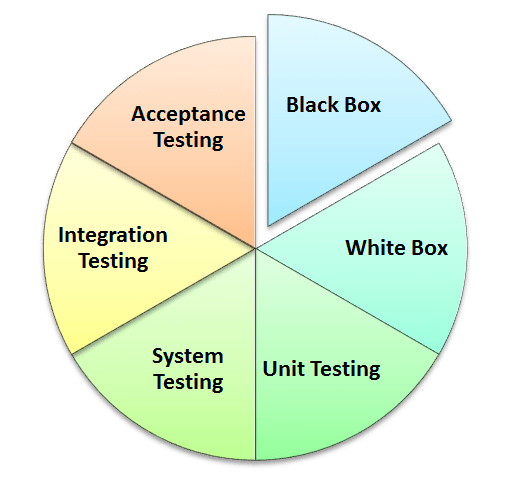
Contingent upon how and when we play out the manual test, we extensively classify it into the accompanying kinds:
Types of manual testing :-
1. Unit Testing :
Approval of a singular programming part or module is called Unit Testing. By and large, the engineers perform it and not by the QA Engineers, as it requires point by point information on the inner program plan and code.
2. Integration Testing :
Integration Testing will be trying of a subsystem which includes at least two coordinating parts. Its completed once the singular parts have been unit tried, and they are filling in true to form. Its done to track down absconds in the connection points and the cooperations between the incorporated parts.
3. System Testing :
System Testing implies testing the framework completely. Every one of the created parts are unit tried and afterward incorporated into an application. When this completions, we test the whole situation thoroughly to guarantee the application satisfies every one of the quality guidelines.
4. Acceptance Testing :
Client Acceptance Testing – UAT is a sort of testing performed by the Client to ensure the framework concerning the prerequisites that got settled upon before. We play out this testing in the last period of testing prior to moving the product application to the Market or Production climate. The customer executes this sort of testing in a different climate (like the creation climate) and affirm whether the framework meets the necessities particulars.
5. Black Box Testing :
In the Black Box Testing strategy, testing occurs without knowing the inward codes and design of the program. The testing occurs according to the client’s perspective, and the analyzer knows just with regards to the information sources and the normal results of the application. The analyzer doesn’t know about the way that the solicitations are being handled by the product and giving the result results.
6. White Box Testing :
White Box Testing is the trying technique wherein the analyzer knows the inner codes and construction of the product. The analyzer picks inputs and executes the test by giving contributions to the framework through the codes and decides the suitable results. The fundamental focal point of White Box Testing is on reinforcing the security and on working on the plan and ease of use of the product.
How to perform manual testing?
How about we comprehend the subtleties of this multitude of steps:
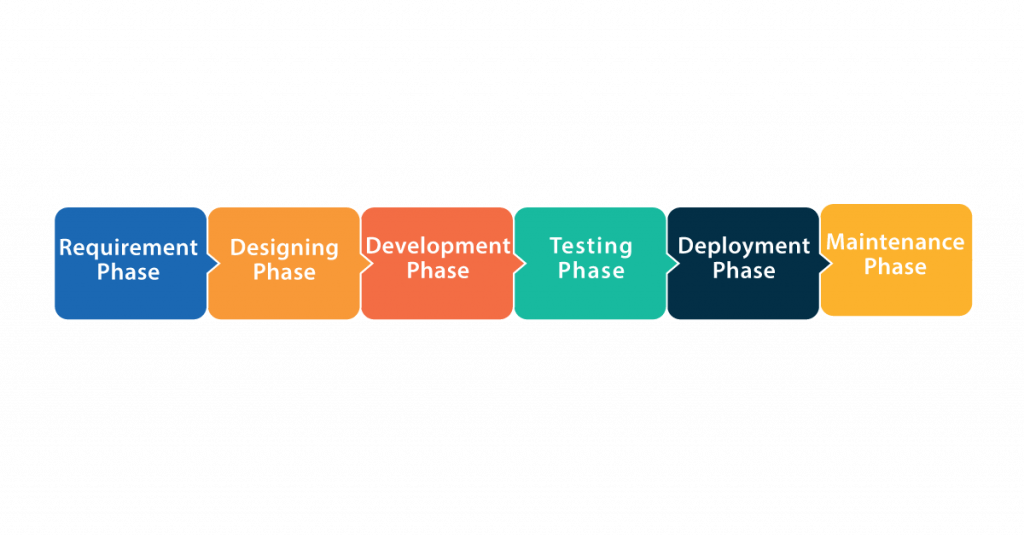
Step 1: First, assemble the necessities utilizing the prerequisite investigation step. When we assemble and comprehend the necessities, we know what the normal conduct is and what we want to test, and when we say we have tracked down the deformity.
Step 2: Secondly, when we comprehend the prerequisites, we recognize and draft the experiments that will cover every one of the necessities contained in the undertaking documentation. Also, the experiments assist us with following an arrangement to test usefulness and different test situations to such an extent that we cover the whole application and actually take a look at anticipated outcomes.
Step 3: Once experiments are prepared, the analyzer needs to audit the experiments with the group chief and with the customer on the off chance that need be. By looking at the experiments, we will track down misfires, if any, and right them prior to executing the experiments.
Step 4: Once experiments are prepared, and the test climate sets, we execute the experiments individually. Each experiment will have one of the accompanying states:
Passed: If the situation under test fills in true to form. Fizzled: If the working isn’t true to form. Skipped: If the experiment can’t finish. It very well might be a result of certain impediments or unanticipated conditions.Step 5: As the experiments execute, we need to report the recognized bugs and imperfections to the concerned engineer and present a bug report.
Step 6: Finally, we make a nitty gritty test report that will remember definite data for the number of imperfections or bugs we found, the number of experiments should be rerun, the number of experiments fizzled, and the number of we skipped. When we fix the bugs and deformities, execute the experiments that couldn’t confirm the proper bugs.
- Manual testing of an application recognizes a large portion of the issues, including the look and feel issues of the application.
- Visual parts like text, design, different parts can without much of a stretch be gotten to by the analyzer, and UI and UX issues can be distinguished.
- It typically has a minimal expense of activity as we don’t utilize any instruments or undeniable level abilities.
- It is appropriate on the off chance that we make some impromptu different to the application as it is versatile.
- People can notice, judge, and furthermore give instinct in the event of manual tests, and this is helpful with regards to ease of use or rich client experience.
- Manual testing is tedious.
- It isn’t not difficult to track down size contrast and shading blend of GUI objects utilizing a manual test.
- Load testing and execution testing is unreasonable in the manual tests.
- At the point when there is countless tests, then, at that point, running tests physically is an exceptionally tedious work.
- Relapse Test cases performed utilizing manual tests are tedious.
What are the advantages and disadvantages of manual testing?
Advantages :-
Disadvantages :-
What is the difference between Manual and Automated testing?

Below are a few of the significant differences between manual and automation testing:
| Execution | Testers manually execute test cases. | Uses tools to schedule and execute the test cases. |
| Time and cost | The manual test takes up lots of time and implies a high cost. | Automated testing: since the test cases are automated, it saves time and is very low. |
| Type of application | We can manually test any application. | Automated testing is beneficial only for stable systems. |
| Nature | The process is such that it is repetitive and boring. | Since the automation tool handles the execution, the tester skips the boring part. |
| Reliability and Accuracy | Low reliability as manual verification is prone to human error | High accuracy since all test cases are automated and executed by tools |
| User interface | More user-friendly and guarantees improved customer experience | Does not guarantee user-friendliness or good customer experience. |
Important Manual Testing Techniques :-
1. Exploratory Testing :
Exploratory testing isn’t the kind of manual testing, however we think it as one of the qualities of the manual analyzer so we take care of it in a little detail. As the name suggests, exploratory testing is the analyzers’ underlying strides of exploring different avenues regarding the product to get to know the elements and functionalities of an application. The manual analyzer investigates every single element of the framework and notice its reaction to various sources of info.
There is additionally a banality to exploratory testing. In certain situations, QA administrators or the undertaking drives the analyzers to comprehend the conduct of framework utilizing exploratory testing. Thusly, analyzers foster how they might interpret the application; rather than knowing the first necessities of the partners. This can prompt a deplorable condition in light of the fact that the product analyzers may get the conspicuous deformities and issues, yet they would not have the option to let know if the relic misses any business rules or necessities.
Exploratory testing appears to be exceptionally productive from the start since you don’t invest any energy or exertion in making the experiments and it yield results rapidly for example recognize issues. In any case, almost certainly, analyzers miss a great deal of cases, particularly connected with business rules, when they are not after a bunch of test situations or experiments. A decent undertaking and quality confirmation director should rehearse more orderly methodology than exploratory testing, assuming there is time and spending plan to guarantee that test inclusion is 100 percent. Obviously, it is valuable for record keeping purposes and for assisting the QA with joining to keep them on target.
Prior to getting your hands on exploratory testing, you may get a kick out of the chance to know how to begin with the exploratory testing, where do the entanglements of exploratory testing lie and what are the tips and procedures to make exploratory testing more productive.
2. Usability Testing :
Ease of use is an ambiguous idea where everybody can concoct one’s own definition which makes convenience testing a difficult one. A couple of shared beliefs on which ease of use of the item is measure incorporate the consistency, design and instinct of the application to direct the client and takes client to what he is searching for. On the off chance that you will perform convenience testing, stay away from the normal slip-ups of ease of use testing.
3. Regression Testing :
Relapse testing strategy is utilized to perform coordination and framework testing. Relapse testing is essentially centered around testing the current functionalities which may have impacted in view of any bug fix, new component or change in code. Relapse testing can invest in some opportunity for greater applications so it is vital to know how relapse testing can be performed successfully.
4. Smoke Testing :
Smoke testing is the sort of testing which is centered around testing the large functionalities of the application. It is utilized for the last check when the delivery is to be given over to the clients or customer. Preferably, smoke testing ought not require over 30 minutes.
- Taking into account how mechanized testing is such a ton quicker, you might ask why designers actually need manual testing. We as a whole commit errors, afterall. That is the reason pencils have erasers. Each application and program definitely has issues.
- That is the reason it’s basic to have a series of testing to guarantee that the application is without bug and works for the client the manner in which it should. By participating in manual testing, the analyzer places themselves in the end client’s position and perceives how the item performs according to the buyer’s viewpoint.
- Additionally, assuming the application will go through a series of computerized testing, it first should be physically tried to determine any issues that computerization testing can’t deal with. It’s not difficult to expect that it’s some way or another more exact or strong in light of the fact that it utilizes “robotization.” However, no application can be tried solely via mechanization. You should had the human component simultaneously.
The Importance of Manual Testing :-
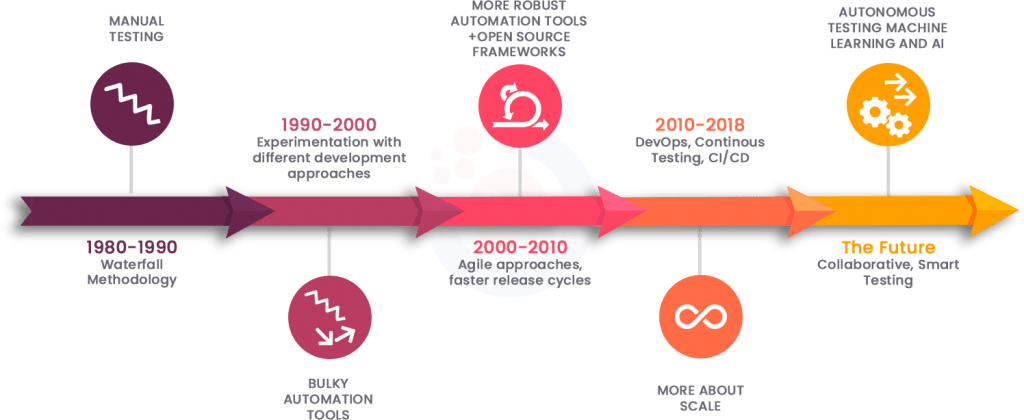
Conclusion :-
Manual testing is an action where the analyzer should be exceptionally quiet, imaginative and receptive. Manual testing is an essential piece of easy to use programming advancement since people are associated with testing programming applications and end-clients are additionally people. They need to think and act with an End User viewpoint.


